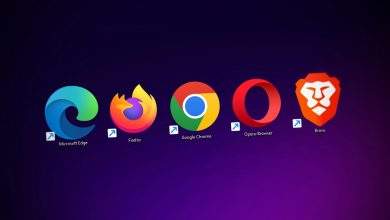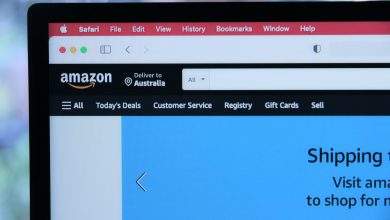
How to See Past Price History of Concert Tickets
In a world where concert tickets often vanish faster than the fleeting notes of a favorite song, understanding past price history can feel like deciphering an enigmatic melody. Have you ever wondered if you could have snagged that coveted front-row seat for less? As fans scramble to secure their spots at sold-out shows, the resale market thrives, and prices can swing wildly based on demand, artist popularity, and even the time of day. But what if you could unlock the secrets of ticket pricing trends?
By delving into historical data on concert ticket sales, you not only empower yourself as a savvy buyer but also gain insights into when to strike for the best deals. Imagine being able to predict price drops or identify peak purchasing periods with confidence! In this article, we’ll explore various tools and strategies that will help you navigate through layers of ticket sale history. Whether you’re planning your next big night out or just curious about how much people are willing to pay for those unforgettable experiences, knowing how to access past price trends is key to becoming a master in the art of concert-going economics.
Importance of Price History for Buyers
Understanding price history is vital for buyers navigating the often tumultuous world of concert tickets. Analyzing past ticket prices not only reveals trends but also provides insight into market demand and vendor pricing strategies. For instance, by observing how prices fluctuate in response to factors like artist popularity or time to the event, buyers can make informed decisions on when to purchase—whether that’s snatching up tickets early or waiting for a dip closer to the date.
Moreover, price history empowers buyers with knowledge that levels the playing field against resellers and scalpers. By recognizing patterns in pricing spikes during high-demand concerts, savvy fans can better avoid overpaying due to impulse buying. This historical perspective transforms the buying process from reactive to strategic, ensuring that each ticket purchased reflects both value and timing rather than just excitement. Ultimately, harnessing this critical data becomes an essential tool for any concert-goer looking to maximize their experience without breaking the bank.

Popular Websites for Ticket Research
When researching past ticket prices for concerts, several websites stand out for their comprehensive databases and user-friendly interfaces. One of the most notable is TicketIQ, which not only tracks ticket prices across various platforms but also provides insights into price trends over time. Users can delve into specific events to observe pricing fluctuations leading up to concert dates, helping fans make more informed buying decisions.
Another excellent resource is SeatGeek, known for its “Deal Score” feature that evaluates ticket deals based on historical data and current market conditions. This scoring system helps concertgoers gauge whether they’re getting a fair price compared to previous sales, giving them an edge in the often volatile secondary market. Additionally, sites like Vivid Seats offer a simple visual representation of how prices have changed throughout an event’s lifecycle—making it easier than ever for enthusiasts to spot patterns that might influence their purchasing timing.
Lastly, don’t overlook social media platforms and fan communities dedicated to music events; they can provide anecdotal insights that complement quantitative data found on dedicated ticket research sites. Engaging with fellow fans online often uncovers personal experiences and tips that enhance your understanding of when tickets typically peak in price or drop unexpectedly. By leveraging these resources together, you’ll equip yourself with a well-rounded perspective on past ticket pricing history that can significantly impact your future purchases.
Using Secondary Market Platforms Effectively
Navigating secondary market platforms can seem daunting, but leveraging their full potential can unlock the best ticketing deals. First and foremost, familiarize yourself with various platforms such as StubHub, SeatGeek, or Viagogo. Each of these sites offers unique features—like price alerts and historical pricing trends—that can help you pinpoint ideal purchasing moments. For instance, by analyzing fluctuating prices over weeks or even months on these sites, you may discover patterns that suggest when a seller might drop their prices to attract buyers.
Additionally, take advantage of user-generated content and reviews within these marketplaces. Many platforms provide insights from past buyers regarding the reliability of sellers and the authenticity of tickets. Engaging in community discussions or following forums dedicated to your favorite artists’ events can provide tips and tricks that seasoned fans have learned through experience. Lastly, don’t shy away from making offers; many sellers are open to negotiation, especially if an event is approaching quickly with unsold inventory. By strategically utilizing these insights and tools offered by secondary market platforms, you enhance not only your chances of finding great deals but also enrich your overall concert-going experience.

Analyzing Historical Data Tools and Apps
When delving into historical data tools and apps for concert ticket pricing, it’s essential to leverage platforms that specialize in aggregating price trends over time. Websites like SeatGeek and Ticketmaster offer integrated analytics features that allow users to visualize past ticket prices alongside historical events. This contextual information not only reveals pricing patterns but also provides insight into the factors influencing demand—be it artist popularity, seasonality, or venue history.
Moreover, utilizing data visualization tools such as Tableau can elevate your analysis. With these tools, you can create custom dashboards that compare multiple events or artists simultaneously. For example, visualizing price fluctuations during peak seasons against off-peak performance periods can help forecast future price trends with remarkable accuracy. By understanding these dynamics through empirical data, you’ll be better equipped to make informed purchasing decisions and perhaps snag discount tickets when demand dips unexpectedly. The interplay of technology with historical analysis not only enhances your buying strategies but also enriches your overall concert-going experience.
Tracking Prices with Browser Extensions
Tracking prices with browser extensions has revolutionized the way we shop online, especially for high-demand items like concert tickets. These handy tools provide real-time alerts and price comparisons, allowing users to monitor ticket fluctuations effortlessly. Imagine being able to receive instant notifications when a ticket drops in price or when availability changes—this can make all the difference for fans eager to secure their spot at a sold-out show.
Additionally, many extensions offer historical data tracking, empowering consumers with insights into pricing trends over time. This means you can gauge whether it’s best to buy now or wait for a potential dip in price. By harnessing this technology, not only do you gain access to detailed analytics about how ticket prices behave, but you also enhance your bargaining power as a savvy shopper. Ultimately, these extensions lighten the load on your wallet and enable informed decision-making in an often unpredictable market.

Social Media Insights on Ticket Sales
Social media platforms have emerged as powerful tools for tracking real-time shifts in ticket sales, providing fans and analysts with pivotal insights. By monitoring trends and conversations on platforms like Twitter, Instagram, and Facebook, it’s possible to gauge public interest before a concert or event. For instance, sudden spikes in hashtags tied to an artist’s upcoming tour often correspond with increased ticket sales. This dynamic relationship between social chatter and purchasing behavior can offer advance notice of sell-out shows or price fluctuations.
Additionally, leveraging social media analytics tools allows enthusiasts to tap into demographic data—revealing which regions are generating the most buzz for specific events. Armed with this information, savvy buyers can time their purchases strategically; they might find that waiting until excitement peaks could mean higher prices but also greater availability of premium seats. Conversely, understanding when enthusiasm plateaus might unlock last-minute deals as sellers aim to offload remaining inventory. By aligning personal strategies with these ever-evolving digital narratives, concert-goers can enhance their ticket-buying experience while potentially discovering hidden gems along the way.
Conclusion: Making Informed Ticket Decisions
Navigating the world of concert tickets can feel overwhelming, especially when prices fluctuate wildly based on demand and timing. By tapping into past price histories, you empower yourself to make informed decisions that go beyond simply “buying now.” Consider leveraging tools that track these historical trends over time; this could uncover specific patterns for your favorite venues or artists.
Moreover, awareness of seasonal factors can significantly enhance your strategy. For instance, tickets might be cheaper during certain months when fewer events are scheduled. This deeper understanding allows you to strategize not just around ticket buying but also about attendance—possibly choosing less popular shows for a more budget-friendly experience while still enjoying the live music magic.
Ultimately, making informed choices isn’t merely about saving money; it enriches your concert-going experience as well. Armed with insights from price history and market trends, you’re not just a passive consumer but an empowered participant in the vibrant world of live entertainment. When you buy smartly, every show becomes a win—not only in terms of financial investment but also unforgettable memories crafted through well-planned outings.



